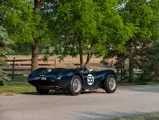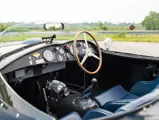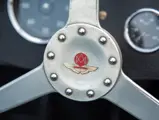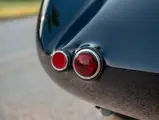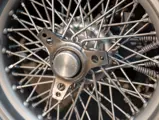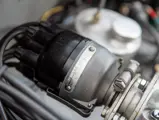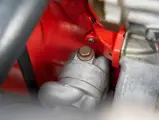
1956 Aston Martin DB3S Special
{{lr.item.text}}
$1,750,000 - $2,250,000 USD | Not Sold
{{bidding.lot.reserveStatusFormatted}}
- Originally built by the factory as Development Project 155, an experimental monoposto racecar
- Factory-campaigned by Works driver Reg Parnell in the Tasman Series during early 1956
- Clothed with authentic Frank Feeley-designed DB3S body
- Purpose-built DB3S-specification engine completed by Steel Wings in 2006
- Comprehensively restored from 1997 to 2006
- Benefits from fastidious care during 26 years of current ownership
- Successfully campaigned at the Monterey Historics and the Colorado Grand
- Documented with owner’s research, restoration and parts invoices, book excerpts, and AMOC register entries
Very few models from Aston Martin’s postwar racing stable can claim the level of success achieved by the DB3S. Commissioned by David Brown in November 1952, the new model was based on the concurrent DB3, but featured a novel chassis design. Aided by a proprietary rear axle and several weight-reducing measures, the DB3S was clothed with arresting new coachwork penned by Frank Feeley that featured voluptuous curves and brake-venting cutaway front fenders.
In May 1953 the DB3S made its competition debut at Charterhall, where factory driver Reg Parnell handily defeated the Jaguar C-Types of the Ecurie Ecosse. The model went on to take wins at the Tourist Trophy, the British Empire Trophy, and the Goodwood Nine Hours. Campaigned by Aston Martin through 1956, the DB3S finished 2nd overall at the 1955 24 Hours of Le Mans, and it claimed no fewer than 15 victories among 35 starts during its four years of factory-entered competition. In May 1955 Aston Martin began offering a DB3S variant trimmed and detuned for client sales, of which 20 examples were built. These cars remain some of the most collectible of Newport Pagnell’s vintage output.
The featured lot, chassis number 131/DB135, bears a well-known history as a factory-based grand prix racing project that was soon converted to sports car specifications. It is fascinating for its shared genetics and current likeness to the DB3S customer cars, being fastidiously prepared for high-speed performance or concours presentation.
David Brown was intrigued by the potential of competing in Formula One, and when the formula was updated for the 1954 season with a 2,500-cubic-centimeter displacement limitation, Aston Martin began experimenting with a 2.5-liter version of its standard 3-liter engine. Under the aegis of Development Project 155 (DP155), this powerplant was dropped into an unstamped DB3S chassis and mounted with monoposto coachwork. After testing proved inconclusive, the project was temporarily mothballed until Reg Parnell persuaded management to let him campaign the car in the winter-scheduled Tasman Series in Australia and New Zealand. The experimental 2.5-liter engine failed in practice, but with a standard race-tuned 3-liter engine in place Parnell captured two podium finishes during January 1956 before the project was abandoned entirely.
Upon DP155’s return to England, team manager John Wyer sold the car to Geoff Richardson, but he was apparently unsatisfied with the engine and quickly replaced it with a Jaguar motor. He then entered the car in a handful of races under the identity of the RRA Special (Richardson Racing Automobiles) before selling it in 1957 to David Gossage. A condition of the sale was that the car should be converted to a sports car configuration prior to delivery, so Richardson removed the grand prix-style body and mounted the coachwork from the customer car chassis number DB3S/105, which was customized with a modified front grille.
After being acquired by Greville Edwards, the DB3S Special suffered a significant racing collision that required a major rebuild of the chassis. The car was returned to Richardson, and he sourced new chassis tubes from Aston Martin. He rebuilt the running gear with an alloy Salisbury differential, rear coil-sprung suspension, a Panhard rod, and four-wheel disc brakes. The repaired car was then sold to Mike Jefferson, for whom it was prepared for racing by Aston Martin specialist Four Ashes Garage, Ltd. of Stratford-Upon-Avon. In 1973 the car was acquired by Ricky Bell via specialist dealer Jeremy Broad; Bell built a new 3-liter Aston Martin engine with racing-specification twin-plug ignition and reverted the nose to the original factory configuration. The Special was then enjoyed in local racing events, including outings at Castle Combe circuit and Oulton Park.
After two additional British caretakers, the Aston Martin was sold into Swiss ownership in 1986, and Roos Engineering in Bern was retained to modify the coachwork to more closely resemble the 1955 works racecars, including eyebrows over the wheel arches and a refinish in midnight blue. Imported to the United States by 1997, the DB3S Special was soon acquired by the consignor, a respected collector of significant sports-racing cars. The car was then treated to a host of restoration measures, including the installation of a freshly built DB3S-specification engine by Steel Wings in New Jersey.
The owner proceeded to enjoy the Aston Martin in various driving events, including the Monterey Historics, the Sprint Vintage Grand Prix in Ohio, and the 2006 Colorado Grand, which it successfully completed. The DB3S Special was also exhibited at the 2006 Palm Beach International Concours d’Elegance, confirming the brilliance of its polished presentation and unique history.
Long recognized by the Aston Martin community as the car that began life as DP155, this remarkable DB3S Special is impressively documented with book excerpts, AMOC Register entries, a vehicle history prepared on the consignor’s behalf, and restoration invoices. Most important to the documented provenance of this unique works development project-turned-sports-racer is an affidavit signed by Richard Green, an original factory engineer who helped develop and build the car, and who had a chance to reunite with it during the 1999 Monterey Car Week. By his recognition and signed testimony, the car has been authenticated as the DP155 grand prix racing project completed in late 1955 for Reg Parnell’s use Down Under.
Assured by the consignor to “pull like a train,” this beautifully presented DB3S Special would make a fantastic acquisition for any collector interested in fulfilling the Aston Martin racing experience, offering all of the legendary model’s performance characteristics at a fraction of the investment. Fastidiously prepared and maintained for further enjoyment at vintage touring and racing events, the car is sure to deliver visceral driving thrills to its next caretaker, epitomizing Newport Pagnell’s glorious competition achievements of the mid-1950s.



























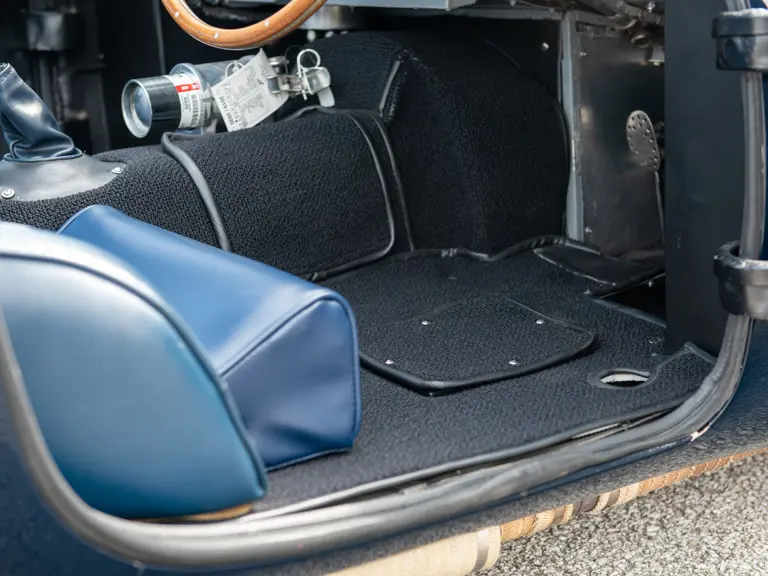







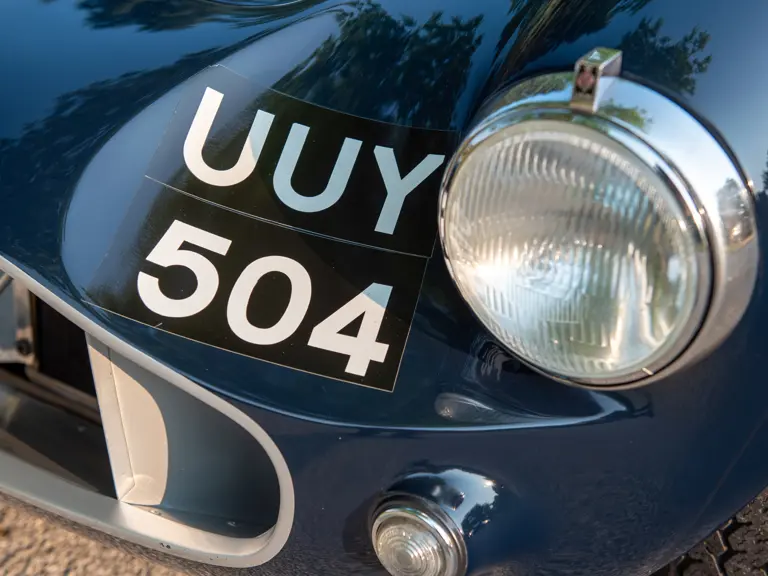




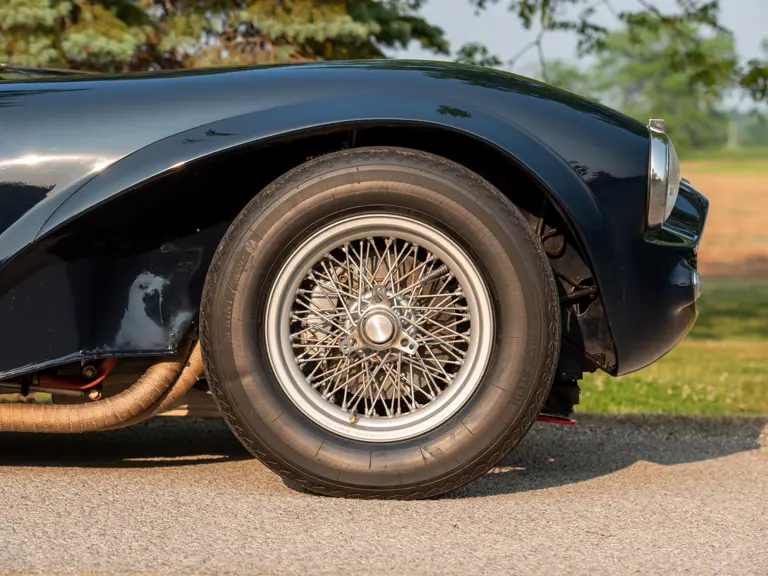


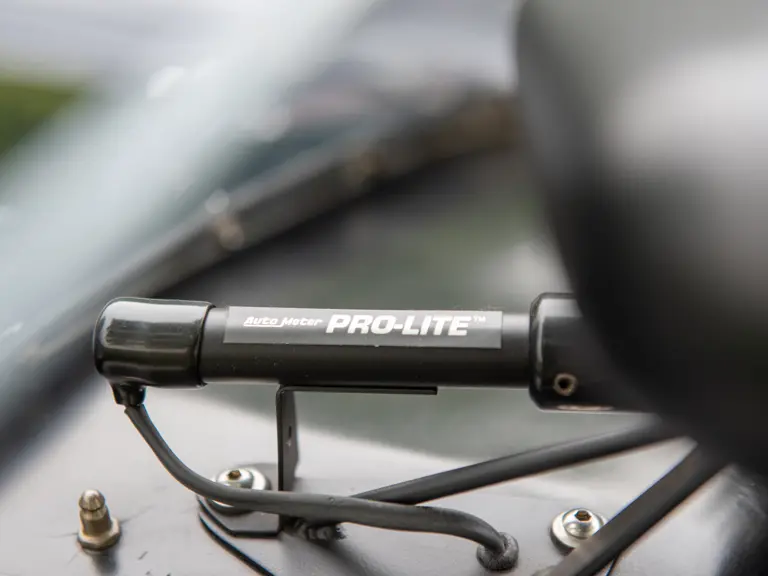














 | Monterey, California
| Monterey, California










